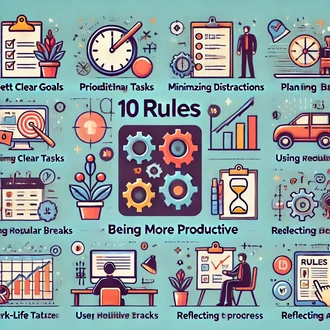Transcription Meetings and communication
In the business environment, meetings are an essential part of communication and decision making. An effective leader understands the importance of clear and efficient communication in meetings to achieve organizational objectives.
In this session, we will explore the importance of well-structured meetings and how to improve communication in these meetings to maximize productivity and organizational success.
The purpose of meetings
Every meeting should have a clear and defined purpose. Before convening a meeting, the leader should ask what the meeting is intended to accomplish and whether it is the best way to address the issue. Meetings can have different objectives, such as sharing information, making decisions, solving problems, generating ideas, or fostering collaboration. It is essential that the leader clearly communicates the purpose of the meeting to all participants so that they are aligned and prepared.
A well-planned meeting is key to its effectiveness. The leader should establish an agenda that includes the topics to be discussed, the objectives of each item, the estimated time for each topic and the necessary participants. The agenda should be sent out in advance so that attendees can prepare adequately. In addition, the leader should ensure that the time and place of the meeting are accessible to all participants and that there are no conflicts with other commitments.
Effective communication in meetings
Communication is a cornerstone of meetings. The leader must foster an environment of active and respectful listening, where all participants have the opportunity to express their ideas and opinions.
The leader's ability to ask clear questions and encourage active participation from the attendees is crucial to effective communication. It is also important for the leader to be attentive to the nonverbal cues of the participants to better understand their thoughts and emotions.
The leader's role in meetings
The leader has a critical role in the conduct of meetings. He or she must facilitate the discussion, maintain focus on the agenda, moderate interventions and make decisions when necessary. It is the leader's responsibility to ensure that all voices are heard and that clear, consensual conclusions are reached. In addition, the leader must be a role model in the meeting, showing empathy, patience and respect for the other participants.
To improve productivity in meetings, the leader can implement techniques such as the use of digital tools for presentations, the establishment of time limits for each topic and the application of group dynamics that encourage active participation. It is also important for the leader to ensure that the meeting stays focused on the key issues and does not get sidetracked into irrelevant discussions.
The leader should be open to receiving feedback from participants on the effectiveness of the meetings. This feedback can help identify areas for improvement and make adjustments for future meetings. The leader can solicit feedback directly, through surveys or one-on-one meetings with participants.
Dealing with challenges in meetings
Meetings can face challenges, such as conflicts among particip
meetings communication




